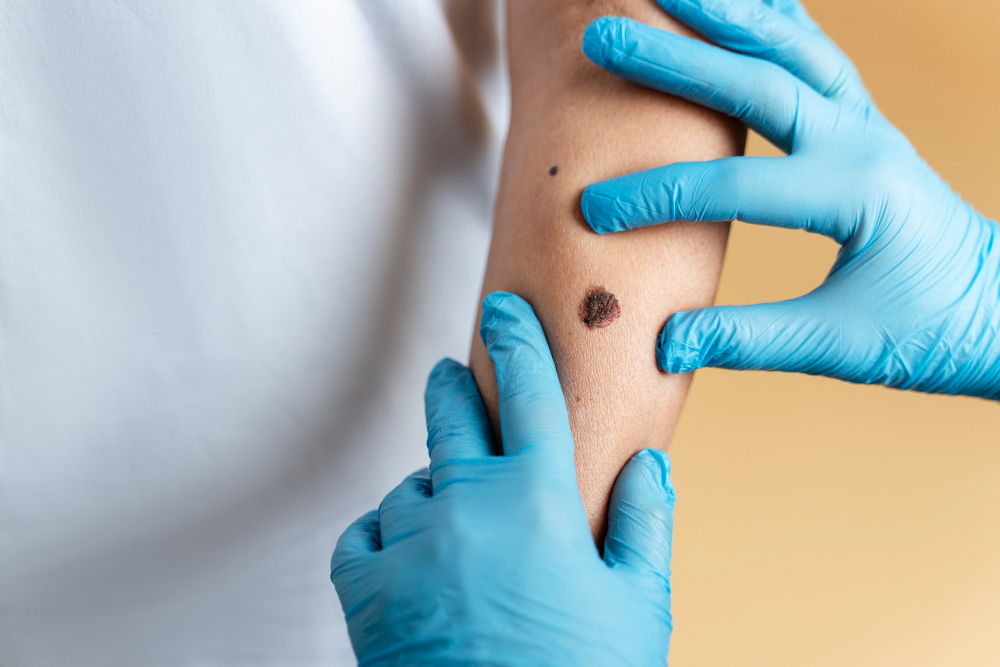Moles, though usually harmless, can often affect one’s self-esteem—especially when they appear in highly visible areas like the face or neck. Whether for cosmetic reasons or due to discomfort, many individuals seek to remove them. Fortunately, modern dermatology has evolved to offer safe and non-invasive mole removal treatments that don’t require surgical cutting or extensive downtime. These methods are gaining popularity worldwide, especially with people looking for gentle yet effective solutions. Many turn to Mole Removal Treatments Dubai as a benchmark in precision and advanced aesthetic care.
What Is Non-Invasive Mole Removal?
Non-invasive mole removal refers to treatment methods that eliminate or reduce the appearance of moles without surgical excision. Unlike traditional surgical techniques, these options minimize scarring, reduce the risk of infection, and usually require little to no recovery time.
Non-Invasive Mole Removal Treatments
Here’s a closer look at some of the most widely used non-invasive techniques for mole removal:
Laser Therapy
Laser mole removal uses focused light energy to break down pigment within the mole. It’s especially effective for flat and pigmented moles.
Benefits:
-
Minimal discomfort
-
Fast procedure
-
No cutting or stitches
Cryotherapy (Freezing)
Cryotherapy uses liquid nitrogen to freeze and destroy the mole’s cells. Over time, the mole dries up and falls off.
Benefits:
-
Quick sessions
-
No scarring in most cases
-
Safe for smaller, benign moles
Radiofrequency Ablation
This technique uses controlled radio waves to generate heat and eliminate mole tissues. The skin heals naturally with minimal surface damage.
Benefits:
-
Precise tissue targeting
-
Minimal bleeding
-
Quick recovery
Electrocautery
This involves burning off the mole using a tiny electric probe. The method is effective for raised moles and usually results in smooth skin afterward.
Benefits:
-
Fast healing
-
Safe for raised moles
-
Simple and efficient
Treatment Process: What to Expect
Let’s walk through a typical non-invasive mole removal procedure from start to finish:
| Step | Description |
|---|---|
| Consultation | A thorough examination by a dermatologist to determine if the mole is benign and suitable for non-invasive removal. |
| Skin Preparation | The area is cleansed and sometimes numbed using a topical anesthetic to reduce discomfort. |
| Application of Treatment | Depending on the chosen method (laser, cryotherapy, etc.), the mole is treated using specialized equipment. |
| Post-Treatment Care | The area may be covered with a bandage and instructions are given for skin care to aid healing. |
| Follow-Up (if needed) | Some treatments may require additional sessions or a follow-up to monitor healing. |
Comparison of Non-Invasive Mole Removal Methods
| Method | Best For | Time per Session | Downtime | Risk of Scarring |
|---|---|---|---|---|
| Laser Therapy | Flat, pigmented moles | 10–20 minutes | Minimal | Very Low |
| Cryotherapy | Small, benign moles | 5–10 minutes | None | Low |
| Radiofrequency Ablation | Raised or flat moles | 10–15 minutes | Minimal | Very Low |
| Electrocautery | Raised moles | 10–15 minutes | Minimal | Low |
Benefits of Non-Invasive Treatments
No Surgical Incisions
These procedures don’t require any cutting of the skin, which significantly reduces the risk of infection and complications.
Faster Healing
Non-invasive methods usually involve quicker recovery times. Most people can resume normal activities immediately after treatment.
Reduced Scarring
Since the skin is not cut open, the chance of visible scars is greatly minimized, which is important for facial moles.
Less Painful
With topical anesthetics and precise tools, the discomfort during treatment is typically minimal.
Highly Effective
Most non-invasive treatments show noticeable improvement in just one session, although some may require follow-ups.
Are These Treatments Suitable for Everyone?
While non-invasive mole removal treatments are safe and effective for many, they may not be suitable for all moles. Dermatologists will first examine the mole to ensure it’s benign (non-cancerous). If there are any irregularities, a biopsy might be recommended before removal.
FAQ’s:
Is non-invasive mole removal permanent?
Yes, in most cases the results are permanent. However, new moles may form over time due to genetics or sun exposure.
Does the treatment hurt?
Most people report only mild discomfort, especially with the use of numbing creams. It’s often compared to a rubber band snap or a warm tingling sensation.
How long does it take for the area to heal?
Typically, the area heals in 7–10 days. For some individuals, complete skin tone restoration may take a few weeks.
Can I remove multiple moles at once?
Yes, depending on their size and location, multiple moles can often be removed during a single session.
Are these treatments safe for sensitive areas like the face or neck?
Absolutely. These methods are designed to be gentle and precise, making them ideal for delicate or visible areas.
Will the mole grow back?
If completely treated, the same mole usually doesn’t return. However, improper aftercare or incomplete treatment might cause partial regrowth.
Do I need to get a biopsy before treatment?
Not always. But if the mole shows signs of being atypical—like irregular borders, sudden growth, or color changes—your provider may recommend a biopsy for safety.
Final Thoughts
Non-invasive mole removal treatments have revolutionized the way we approach skin aesthetics. With quick procedures, minimal downtime, and outstanding cosmetic results, they provide a modern solution for those seeking smooth, mole-free skin. Whether you’re dealing with one prominent mole or several small ones, there’s likely a non-invasive method that can meet your needs with excellent outcomes.









